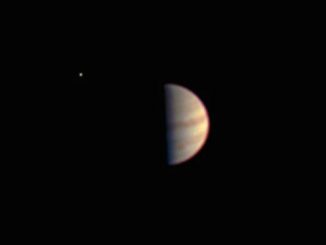
Ganymede

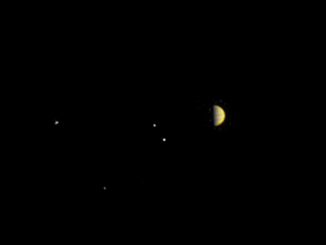
Jupiter and its satellites seen by ‘people’s camera’ on Juno probe
The visible camera on NASA’s Juno spacecraft is capturing a time-lapse movie of Jupiter and its four largest moons as the orbiter dives toward the giant planet for a 4 July rendezvous, and officials have released a first taste of the views armchair scientists and space enthusiasts can anticipate over the coming weeks and months.
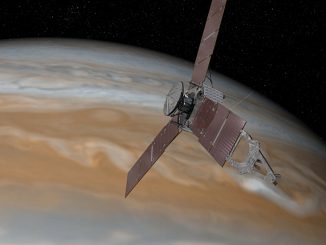
NASA’s Juno spacecraft closing in on Jupiter for 4 July orbit insertion
On 4 July, NASA will fly a solar-powered spacecraft the size of a basketball court within 2,900 miles of the cloud tops of our solar system’s largest planet, Jupiter. Over the past two weeks, several milestones occurred that were key to a successful 35-minute burn of its rocket motor, which will place the robotic explorer into a polar orbit around the gas giant.
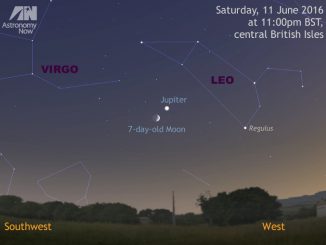
See the Moon and Jupiter get close on 11 June
As dusk fades to dark on Saturday, 11 June, observers in the British Isles should look low in the western sky to see the 7-day-old waxing crescent Moon and Jupiter less than 3 degrees apart, within the same binocular field of view. Get your observations in now as the solar system’s largest planet is poised to leave the celestial stage during the summer.

Make the most of your Jupiter observations during May
Now two months past opposition, the solar system’s largest planet, Jupiter, is highest in the UK sky before sunset and is already descending in the southwest by the time the sky is dark enough to observe it. However, there is still phenomena of the Galilean moons to see and the planet’s Great Red Spot, so make the most of your Jovian observations while you can during May.
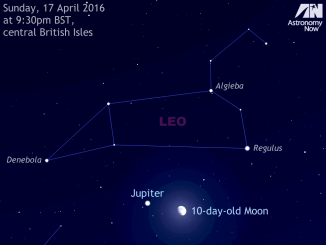
See the Moon and Jupiter get close on 17 April
As dusk fades to dark on Sunday, 17 April, observers in the British Isles should look up to the southern sky to see the 10-day-old waxing gibbous Moon and Jupiter just four degrees apart, within the same binocular field of view. Jupiter’s largest moon, Ganymede, and second Galilean moon, Europa, provide some events for telescope owners to view at higher magnifications.

Europa’s flexing icy crust might make more heat than scientists thought
As it orbits Jupiter, the icy surface of Europa heaves and falls with the changing pull of its parent planet’s gravity, creating enough heat to likely support a global ocean beneath the Jovian moon’s solid shell. Experiments by geoscientists suggest that this process, called tidal dissipation, could create far more heat in Europa’s ice than scientists had previously assumed.

Jupiter continues to delight and amaze observers during April
The impact of a small comet or asteroid on Jupiter observed by European amateur astronomers on 17 March has heightened interest in the solar system’s largest planet. While such an event is uncommon, Jupiter and its family of four bright Galilean moons provide a wealth of other interesting phenomena to view with small telescopes during April.

Amateur astronomers video impact on Jupiter
Unbeknown to two European amateur astronomers 1000 miles apart capturing video of Jupiter through their telescopes in the early hours of Thursday, 17 March, their digital footage would subsequently show confirmation of a totally unexpected phenomenon — the likely impact of a small comet or asteroid on the edge of the solar system’s largest planet.

See the Moon’s close encounter with Jupiter on 21 March
As darkness falls, observers in Western Europe and the British Isles fortunate to have clear skies can view a naked-eye conjunction between largest planet Jupiter and the Moon. For telescope owners, Jupiter’s Great Red Spot will be on show, while Galilean moons Io and Europa partake in a close orbital dance.
